Betta Fish, also known as Siamese fighting fish, are a popular aquarium fish species choice for kids and beginners in the fish-keeping hobby. These beautiful-looking betta fish come in various colors and patterns, making them a visual treat for any aquarium.
But bettas are more than just pretty fish – they are unique creatures with a ton of personality and endearing quirks. Let’s take a closer look at some betta fish fun facts that might surprise you and your kids.
27 Betta Fish Fun Facts For Kids
1. Betta Fish Come From Southeast Asia
Bettas are native to Asia. They’re colloquially known as Siamese fighting fish, but these fish aren’t just popular in Thailand. Bettas can be found in the rice paddies and drainage ditches of Thailand, Malaysia, Indonesia, Laos, Vietnam, and Cambodia, making them one of the most widespread freshwater fish in the world.
2. You Can Find Bettas In Ponds And Lakes
Though you might think of bettas as fish that only live in bowls or small aquariums, these fish can survive in ponds and lakes. In the wild, bettas build bubble nests out of saliva and floating plant matter on the water’s surface. How cool is that?
3. Betta Fish Are Carnivores
Bettas are carnivores that relentlessly hunt their prey. They feed on small insects, crustaceans, and zooplankton in the wild. In captivity, they will accept a variety of live, frozen, and freeze-dried foods such as brine shrimp, daphnia, mosquito larvae, and bloodworms.
One thing to remember about these fish is that they’re predators at heart. So, if you have any tiny invertebrates in your aquarium, there’s a good chance your betta will hunt them down and eat them. Learn to feed your betta properly so he gets the nutrition he needs without hunting and killing your other fish.
4. Wild Bettas Are Dull Colour.
We may all be accustomed to the brilliantly colored bettas that we see in pet stores, but did you know that wild betta are actually a dull brown or green color? The bright colors and patterns we see today are the result of years of selective breeding by fish farmers.
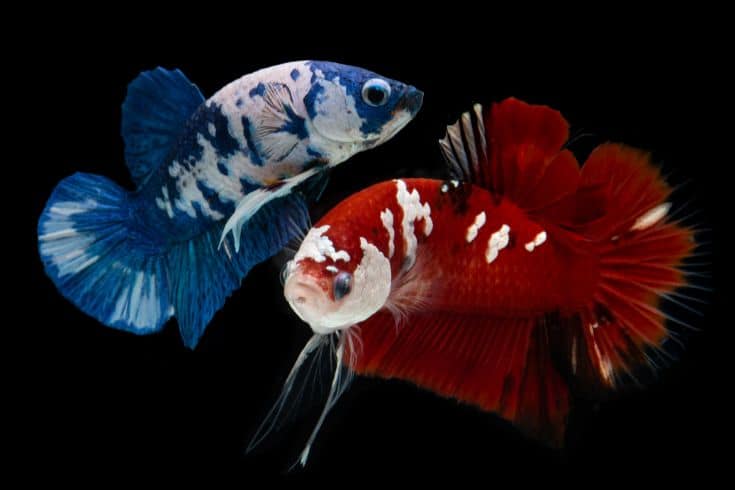
Note: Selective breeding comes with its pros and cons. While it can result in some stunning fish, it can also lead to health problems such as genetic defects and deformities. If you’re looking for a healthy betta, make sure to do your research and buy from a reputable breeder.
5. Bettas Communicate With Each Other.
Male bettas flare their gills as a means of communication. For instance, when two males meet, they will both flare their gills and fins in an attempt to intimidate each other. If one fish backs down, he acknowledges the other fish as the alpha male.
Bettas also flare their gills and fins when they are courting a female. If the female is interested, she will flare her gills and fins back at the male. If she’s not interested, she will ignore him or swim away.
Understanding these communication cues can help you better understand your betta’s behavior. Being observant will also help you catch any potential problems early on, such as aggression towards other fish.
6. They Grow As Long As 3 Inches.
A single betta fish can grow as long as 3 inches. This can vary depending on the species and subspecies of the betta in question, but most grow into an average length of 2.25 inches (5.7 cm) in a standard water fish tank (5 gallons or more.)
Under ideal conditions, a betta fish will maximize its growth potential, reaching up to 3 inches in length. However, in a smaller fish tank or bowl, a betta’s growth will be stunted, so keep this in mind if you’re planning on keeping a betta in anything other than a 5-gallon fish tank.
7. They Are Territorial And Fight.
Bettas are also known as Siamese fighting fish, and not without good reason. Though these fish are generally peaceful and calm, male bettas can be fiercely territorial, especially when it comes to other male bettas. Most betta fish owners know not to place two males in the same tank, as they will often fight to the death.
Female betta fish are also territorial, but not to the same extent as males. These fish will often flare their gills and fins at each other, but they rarely come to blows. If you do decide to keep more than one female betta in the same tank, be sure to provide plenty of hiding places and give them plenty of space to avoid potential fights.
8. Bettas Like Warm Water.
Bettas are tropical fish, which means they prefer warm water. In the wild, these fish live in water that is between 76 and 86 degrees Fahrenheit (24 to 30 degrees Celsius.) In captivity, bettas should be kept in water that is between 78 and 80 degrees Fahrenheit (26 to 27 degrees Celsius.)
If the water in your betta’s tank is too cold, he will become sluggish and may even stop eating. In extreme cases, cold water can lead to death, so be sure to monitor the temperature of your betta’s tank and make adjustments as necessary.
9. A Danish Doctor Named Bettas.
In 1892, a Danish doctor named Theodore Grahl-Madsen brought the first bettas back to Europe from Thailand.
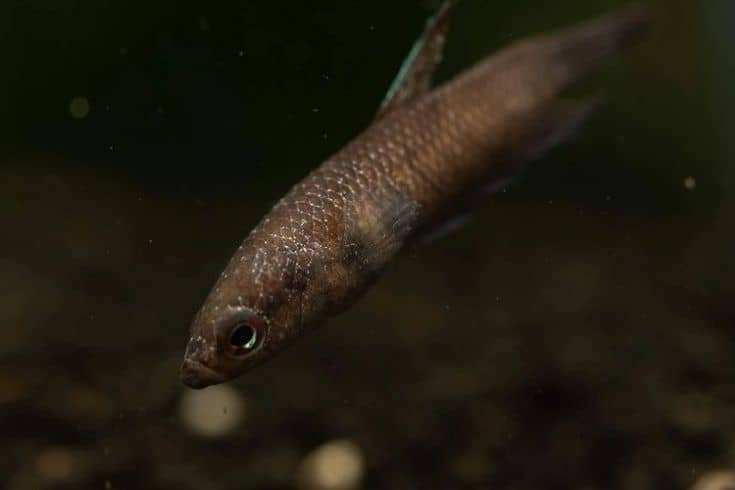
He named them after the local tribe he got them from, the “Bettah” tribe.
10. You Can Train Your Betta Fish.
With some patience, you can train your betta fish to do tricks! The most common trick that a betta learns is to swim through a hoop.
Other fish tricks include:
- Following your finger at times.
- Playing soccer.
- Even jumping out of the water for pettings.
11. Bettas Can Jump.
Yes, they can!
Bettas are naturally curious creatures and can leap out of tanks that are not adequately covered to explore their surroundings. They may also jump out if they are stressed or feel threatened.
In fact, bettas can jump as high as 2-3 inches! Therefore, it is essential to have a lid on their tank to prevent them from jumping.
12. Bettas Come In Many Different Colors.
The most common colors are blue, yellow, white, red, orange, and turquoise. Bettas also come in mixed colors. Bi-colored bettas are exceptionally rare and highly sought-after. These have a single solid color on their bodies and fins with another completely different color.
In addition, Bettas are also known to change colors based on their mood or environment. If they are happy, their colors will be more vibrant. If they are stressed, their colors will turn darker.
13. Bettas Recognize Their Owners.
Unlike other popular pet fish, bettas have excellent memories and may recall humans!

That’s right – Bettas can recognize their owners and often swim to the front of the tank when they see them. Their amazing memory allows them to form long-lasting bonds with their owners. Therefore, the more frequently you interact with them, the stronger your attachment will be.
14. Betta Sleep At The Bottom of A Tank.
Bettas nap throughout the day. Just like us, they need their beauty sleep! During their naps, they float to the bottom of the tank and spread their fins out for stability.
To help them sleep better:
- Move your fish tank to a shady location or decorate it with floating plants, caves, and tunnels to give them a dark place to nap when it’s light outside.
- Adding elements to the tank can also give your betta fish a place to hide while sleeping, making their sleep more pleasant and stress-free.
- Avoid tapping on the glass tank, and do not bother them if they appear to be resting.
15. There Are More Than 70 Types of Betta Fish Species.
Yes, 70 types of betta fish species!
Though all bettas are beautiful, each species has its own unique coloration, pattern, and fins. The most popular types of betta fish include:
- The Crown Tail Betta
- Veil Tail Betta
- Delta/Super Delta
- Double Tail
- Half Sun/Comb Tail
- Half Moon
- Rose Tail/Feather Tail
- Round Tail/Fan Tail
16. Bettas Can Breathe Air.
They are labyrinth fish that allows them to breathe air directly from the surface.
This is why you will often see bettas taking gulps of air at the water’s surface. Their labyrinth organs act as a lung, allowing them to live in water with less than ideal oxygen levels.
However, bettas still rely primarily on their gills to breathe and should not be kept in water that is low in oxygen. This means you still need to keep your tank water well-oxygenated and clean to ensure your betta’s health.
17. Bettas Can Get Along With Different Fish Species
While bettas are known to be aggressive towards other bettas, they can actually get along with different fish species. They are peaceful fish that can be kept with other community fish such as guppies, tetras, danios, and corydoras.
No matter which fish you decide to keep with your betta, ensure they are not aggressive or nippy. You also want to avoid bright and colorful fish or species with long, flowy fins. Bettas may view these fish as a threat to their territory, causing them to act in erratic and aggressive ways.
18. Bettas Are Poor Swimmers
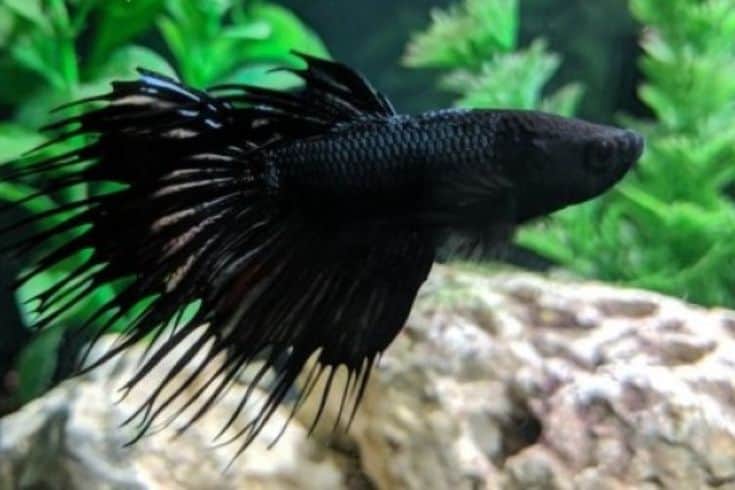
Unfortunately, the magnificent fins that make bettas so beautiful also impede their swimming. Bettas are poor swimmers and get tired easily. They often have a hard time keeping up with other fish in the tank and may struggle to compete for food.
A strategically placed aquarium filter can help reduce the amount of swim time your betta needs by providing a current for them to “ride.” You can also add plants or rocks to your tank to create hiding spots and resting areas for your betta to reduce their stress levels.
19. The Plakad Pak Klang – The First Globally Known Betta Fish.
The Plakad Pak Klang is a type of betta fish that originates from Thailand and is one of the first betta fish to be known globally. This subspecies features shorter fins and a more compact body than other betta fish.
The Plakad Pak Klang is an aggressive fish that is known to attack other fish, so it’s important to only keep them with fish that can defend themselves. This type of betta is also a notorious fin nipper, so it’s important to keep an eye on your fish if you add one to your tank.
20. Male Bettas Care For Their Babies.
Talk about gender roles! In the wild, the male betta’s job is to build the nest and care for the eggs until they hatch. He will then protect the fry until they are big enough to fend for themselves. Thankfully, baby bettas hatch from their eggs in 3 days, making this a shorter process for the male.
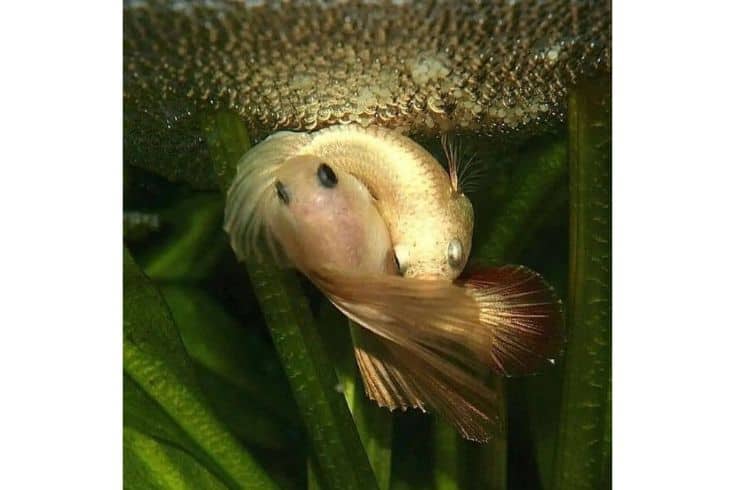
On the other hand, female bettas are typically left to their own devices after spawning. Sometimes, they’re removed from the breeding tank altogether, because they can become aggressive towards the male and fry.
21. Bettas Can Live Up to 5 Years in Captivity.
The Siamese fighting fish’s lifespan is only 3-5 years, though some are known to live up to 10 years with proper care.
To keep your bettas living longer, here are some steps you should follow:
- Make sure you buy a healthy betta.
- Place them in a bigger aquarium tank so they can swim and move around freely.
- A water filter will help remove all the ammonia and other toxins from the water. It will also help remove debris that floats around, making the tank look cleaner.
- Make sure they are exercising. One way is to add live foods to the tank. All the chasing the betta is going to do will work wonders for its health.
22. Bettas Like Slightly Acidic Water
The ideal pH level for a betta fish is between 6.8 and 7.4. To maintain this level, you’ll need to test your water regularly and make adjustments as necessary. You can use a pH test kit to test the water in your tank and add chemicals to raise or lower the pH level as needed.
Indian almond leaves are a natural way to lower the pH level in your tank. You can add a few leaves to your tank and remove them when the pH level has reached the desired level. Though the tannic acid from the leaves can be beneficial to your fish, removing them once the pH level has been lowered is important, as too much tannic acid can be harmful.
23. Baby Betta Fish are called “Fry.”
Bettas are considered to be in the fry stage until they are between 5-6 weeks old. They then enter a brief juvenile phase, before becoming full-fledged adult betta fish at approximately 3 months of age.
24. Betta Fish Should Not Be Kept In 1-Gallon Tanks
It is a myth that bettas can live in 1-gallon tanks. In fact, keeping any fish in such a small body of water is cruel.
Bettas need at least 2.5 gallons of water to be happy and healthy. A 1-gallon tank is too small for a betta fish to swim around in and it will not be able to filter the water properly. This can lead to a number of health issues for your fish, so it’s important to get a tank that is the proper size.
25. Betta Fish Should Not Be Fed Too Much
One of the most common mistakes people make when caring for bettas is overfeeding them. Bettas only need to be fed once a day and should only be given as much food as they can eat in 2 minutes.
Overfeeding your betta can lead to a number of health problems, including swim bladder disease and dropsy. Swim bladder disease is a condition that affects the betta’s ability to swim properly and can be fatal if left untreated. Dropsy is a condition that causes the betta’s scales to stick out and can also be fatal.
26. They Are Cold-Blooded.
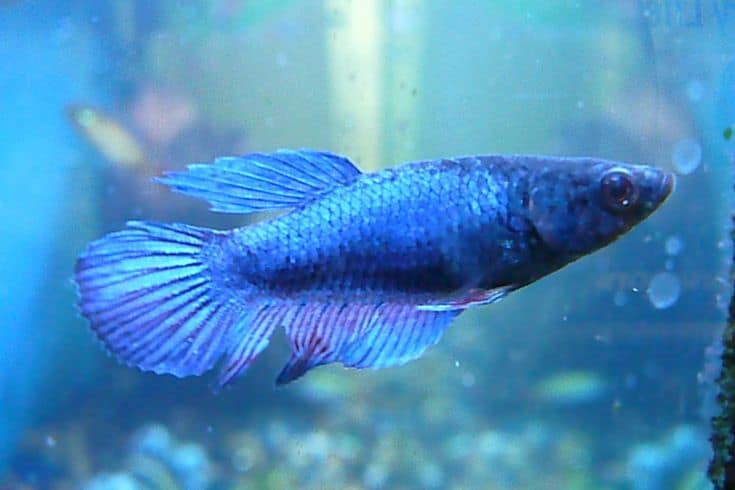
Bettas are cold-blooded, which means their internal temperature changes according to the water.
Their body will slow down and move less significantly if the water is too cold. If the water is too hot, the fish will get stressed and might die.
The ideal temperature for bettas is between 76 to 82 degrees Fahrenheit.
27. Bettas Have Better Eyesight Than Other Fish.
Bettas have good eyes for short distances.
Thus, they are attracted to bright colors and shiny objects. Although short-sighted, they can also see in low-light conditions better than other fish.
FAQ

Do Bettas Get Lonely?
They are unlikely to get lonely because they are not social fish.
However, they might appreciate some company in the form of another betta or some peaceful tank mates such as snails or shrimps.
Do Bettas Have Teeth?
Yes, they do have teeth. They are sharp!
Apart from helping them to chew on the foods, they use these sharp teeth to attack and tear up their enemy’s tail, fin, and scales. This is why you should steer clear of keeping two male bettas in the same tank.
Do Betta Fish Like To Be Touched?
No, bettas do not like to be touched.

They are pretty sensitive to vibrations and will often become stressed if they are handled too much. If you must move your betta, be sure to do so gently – either with a net or by cupping your hands around him.
What Color Is Betta Fish Poop?
Normal betta poop will be small, round, and brownish. Although the poop can vary in colors, sometimes it may appear tan or reddish, depending on the foods they eat. Stringy poop or poop that is white or clear could be a sign of internal parasites and you should take your betta to the vet as soon as possible.
The Takeaway
Bettas are fun and interesting pet to have. They are easy to care for and make great additions to any home. With their vibrant colors, color patterns, and unique personalities, bettas will surely bring you joy for years to come.
Did you find this article helpful? If you know someone looking to share this information on bettas with their kids, please share this article with them. And stay tuned for more helpful articles about betta fish.
Thanks for reading!
